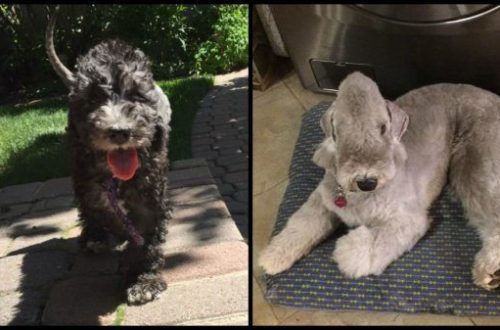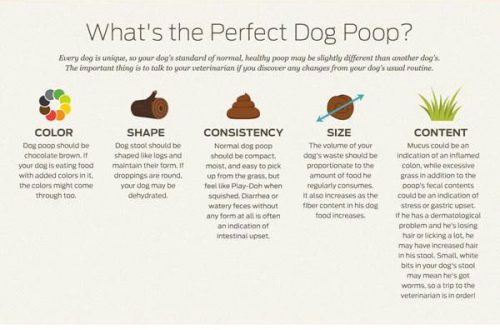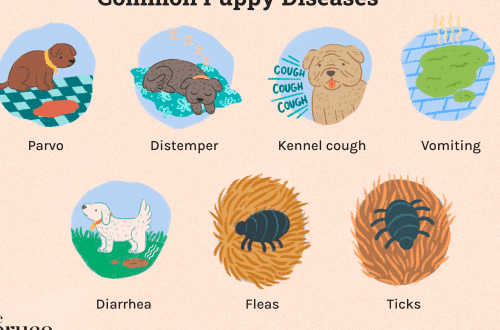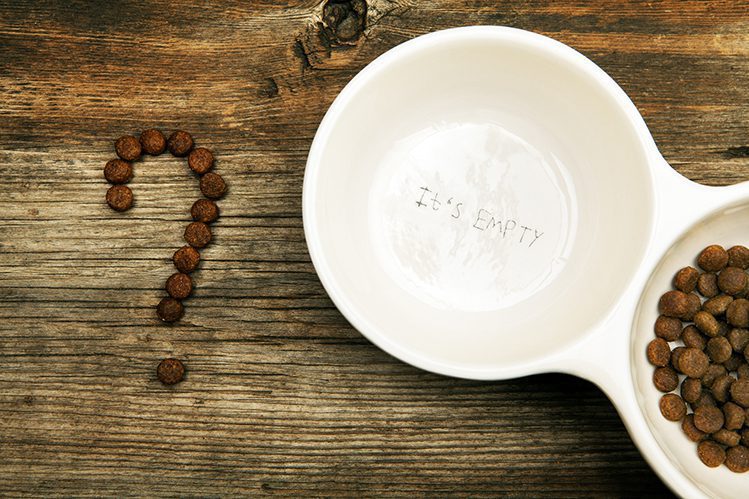
How to read the label
There are so many dry foods for cats and dogs in pet stores – how to sort them out? What to look for when reading a label? How not to make a mistake in choosing?
The owner of the pet buys dry food for several reasons:
they make life very easy, tk. pet food does not need to be cooked
the pet gets everything he needs: a complete set of nutrients in the optimal ratio
special diets support the health of the pet when he has a tendency to various diseases
dry food is economical: even expensive dry food is less expensive than self-prepared balanced healthy nutrition.
But in order to choose the right dry food, you need to know how to read the label on its packaging. What are the key points on it?
There is a variety of information on the packaging, the main thing is not to confuse it.
Before buying food, carefully study the following two points:
1. Composition (or “Ingredients”)
This is what the food is directly made of, the products that are put into the mixer or extruder.
All ingredients, according to EU and US regulations, are listed one after the other in descending order. First, there are those that are the most by weight in the feed, then those who are at least 1% less, and at the very end are the ingredients at the rate of 0,1% per kg of feed.
2. Chemical analysis
This is the ratio of nutritional components: proteins, fats, vitamins and minerals per 100 grams of feed. As a rule, it is indicated as a percentage, but it can also be found in grams.
Carbohydrates are not written on the label: they are calculated by subtracting from 100 all the numbers given in the analysis.
It is important to know!
The label may show absolute numbers, i.e. in terms of dry matter (minus moisture, and then it is indicated in the analysis) or in the raw product (for example: crude protein, crude fat). Then the last figures will be larger, because they will also contain percentages related to water.
You need to be careful with the numbers in the analysis: they show the amount of protein that has developed from all the ingredients. It will be a mixture of animal, vegetable and even bacterial-fungal proteins (if brewer’s yeast and probiotics are used in the feed). This figure does not indicate how well all this protein will be absorbed in the body of a dog or cat. It gives information about how much a pet consumes, and depends on a number of factors:
– what is the source of this protein (animal or vegetable),
– what part of the animal was used (muscle, meat or offal),
– on the state of the body: are there any violations of digestion, is the absorption of nutrients in the gastrointestinal tract disturbed, are there any inflammatory processes in the mucosa and other pathologies.
Choosing a diet for a particular pet is a rather complicated process that can be facilitated by knowing the rules for writing a label and the characteristics of your particular pet.
What to pay attention to in the composition?

- The basis of the feed (the ingredient that is in the first place in the composition)
Dogs and cats are carnivores, so the food should be based on an animal protein source.
It can be the meat of any mammal, bird or fish, as well as an egg and milk protein. The last two components are rarely found in the basis of the diet. They are very expensive and are usually added in small amounts to balance the amino acid profile of the feed.
It is better if the main protein ingredient in dry food is dehydrated, i.e. dehydrated, dry. Then it has the same relative mass both at the input to the feed preparation process and at the output, that is, in the finished product. However, many manufacturers use fresh meat as it enhances the palatability of the feed.
If fresh meat is in the first place in the composition of the feed, be sure to look at the ingredient that follows it. During the production of feed, moisture from fresh (raw) meat will evaporate, it will become less in weight and, in fact, the main ingredient in the feed will be the one that is listed second in the composition, after fresh meat. It is better if it is dehydrated meat (chicken protein or something like that) than rice or wheat.
- Sources of carbohydrates
The main sources of carbohydrates in the diet of dogs and cats are cereals. They contain in their composition complex sugars – starches, which, splitting, give the body the glucose necessary for energy.
Sources of carbohydrates can be not cereals, but root crops, fruits, melons and other plant foods. But they must be in an amount of at least 30-40% in terms of dry matter (if you look at the analysis of the feed), otherwise it will be difficult to call this feed balanced and only for certain animals, which it is suitable for due to the individual characteristics of the organism.
The more sources of carbohydrates in the food, the longer they will provide energy to the body, reducing the likelihood of gaining excess body weight.
- Fibre
Fiber is a small percentage, but a very important nutrient in terms of body function and health.
Pay attention to the source of fiber. Cellulose is useful for cats to remove hair from the gastrointestinal tract, prevent bezoars in the stomach and is used in the treatment of certain diseases (in special dietary feeds). But for all other animals, it does not benefit, but, on the contrary, inhibits the absorption of such important nutritional components as amino acids and fatty acids.
Useful fiber belongs to the category of “Medium-fermented fiber”, and its main source in ready-made food for cats and dogs is the pulp (pulp) of sugar beet. Moreover, it is the pulp that is useful, since sugar remains in the pulp (which is also sometimes added to feed) after production. Sugar can cause rapid fermentation processes in the large intestine, which will lead to flatulence.
Beet pulp supports colon health. It provides the mucosa with nutrients that the beneficial microflora living in this section extracts for them. In combination with the prebiotics contained in the feed (XOS – xylooligosaccharide, FOS – Fructo-oligosaccharides, inulin), beet pulp not only supports good bowel function, but also strengthens the immune system, protects the body as a whole.
Healthy gut = healthy immune system.
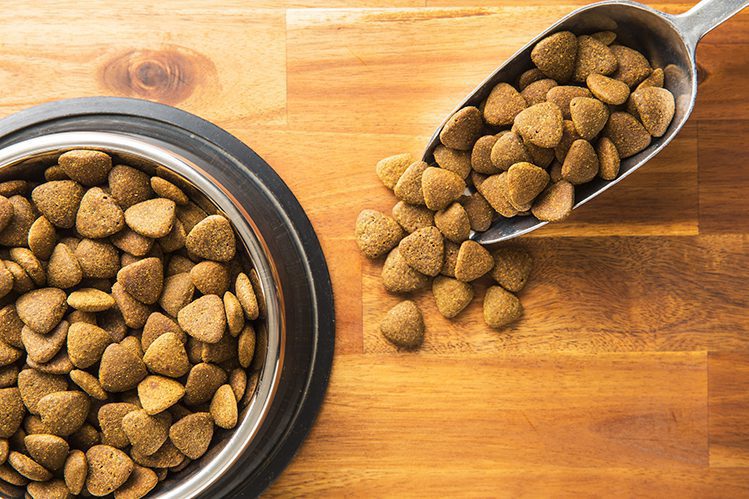
- Fats
Sources of fats should also be varied, because they provide important components such as omega fatty acids.
From animal fat, Omega-6 fatty acids mainly enter the body, which ensure the elasticity of tissues and the shine and beauty of the coat. And from fish (in particular salmon) and linseed oil – Omega-3 fatty acids. They reduce the body’s response to inflammation and promote healthy skin and joints.
The balance of fatty acids in the diet is very important, so you should pay attention to their ratio. It should be indicated on the package (or their number in the analysis, but you can also calculate it on a calculator). The optimal physiological ratio for maintaining the health of a dog and cat is 5-10 parts of Omega-6 to 1 part of Omega-3.
- ISO
The advantage of the feed will be the use of MOS (mannanoligosaccharides) as sources of insoluble dietary fiber.
The beneficial effect of MOS is the binding of pathogenic microflora. Once in the body, mannanoligosaccharides attach to pathogens and remove them from the body along with feces, thereby preventing their spread in the body.
- Yukka Shidigera
Another important component that fights pathogenic microflora and supports digestion.
Yucca normalizes the functioning of the digestive system, regulates excretory processes, removes ammonia, destroys pathogenic bacteria and fungal mold spores.
This component is introduced into the feed in order to eliminate unpleasant odors of various nature, including the smell of feces.
The composition of the feed differs depending on its purpose. Food will bring maximum benefit if it is selected for the individual characteristics of a particular pet. So, for a sterilized or elderly cat, you need to choose the appropriate rulers (for sterilized and elderly). For pets with a tendency to certain diseases, special therapeutic diets are suitable that will allow you to keep the problem under control. The choice of diet must be agreed with a veterinarian.
Once you have decided on a food line, do not change it unless absolutely necessary. Any change in diet is stressful for the body.
Healthy and delicious food for your pets!



